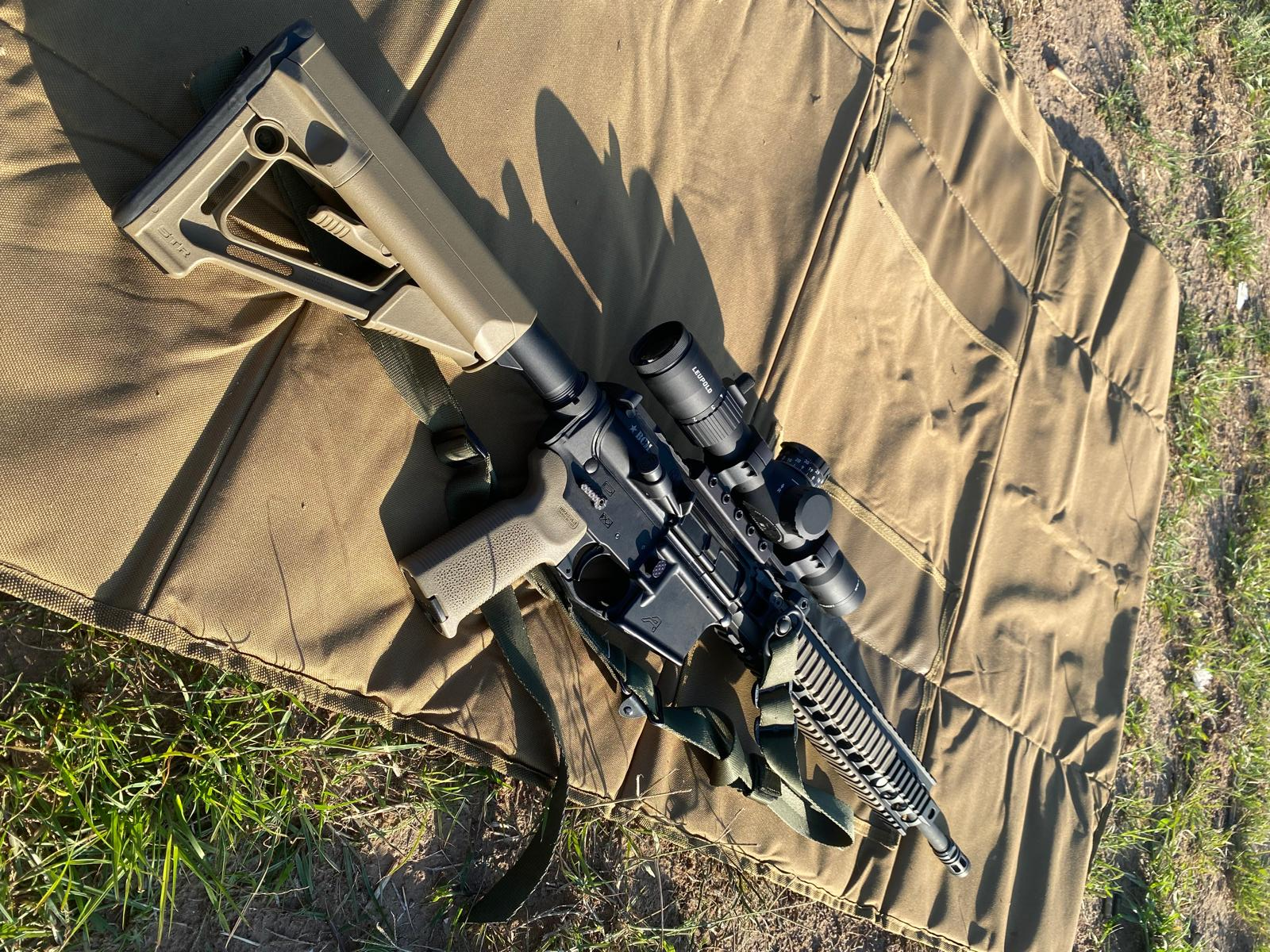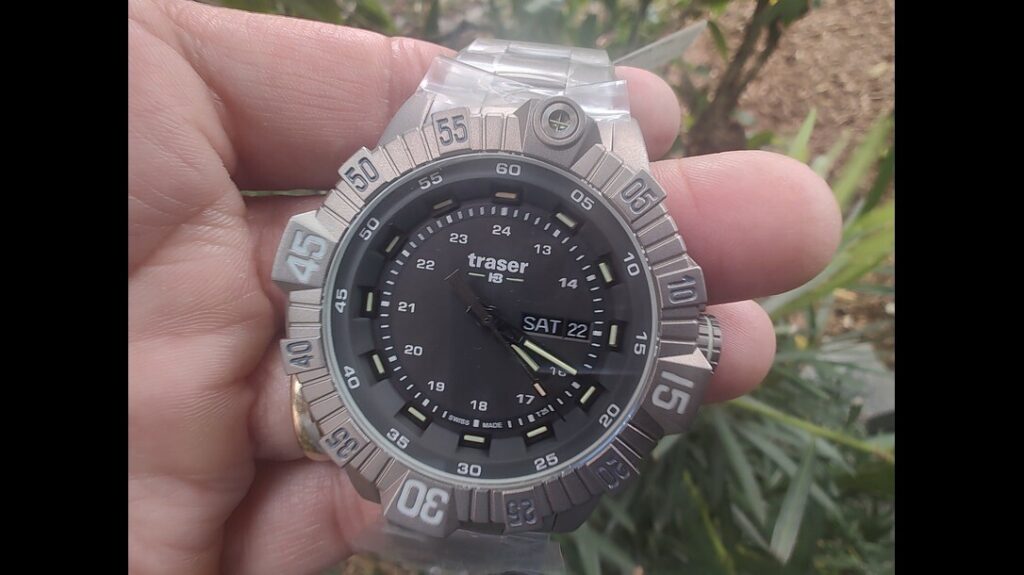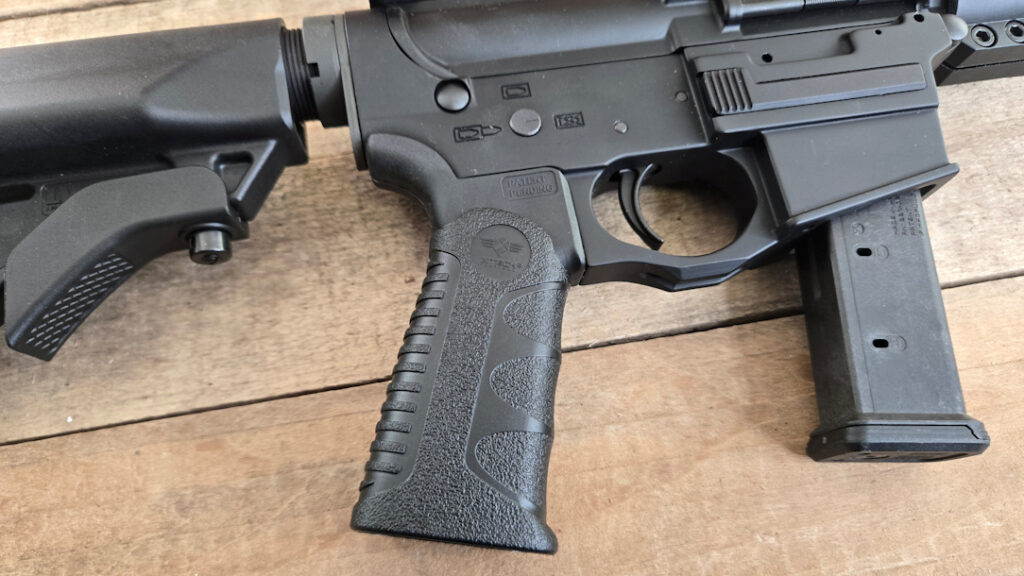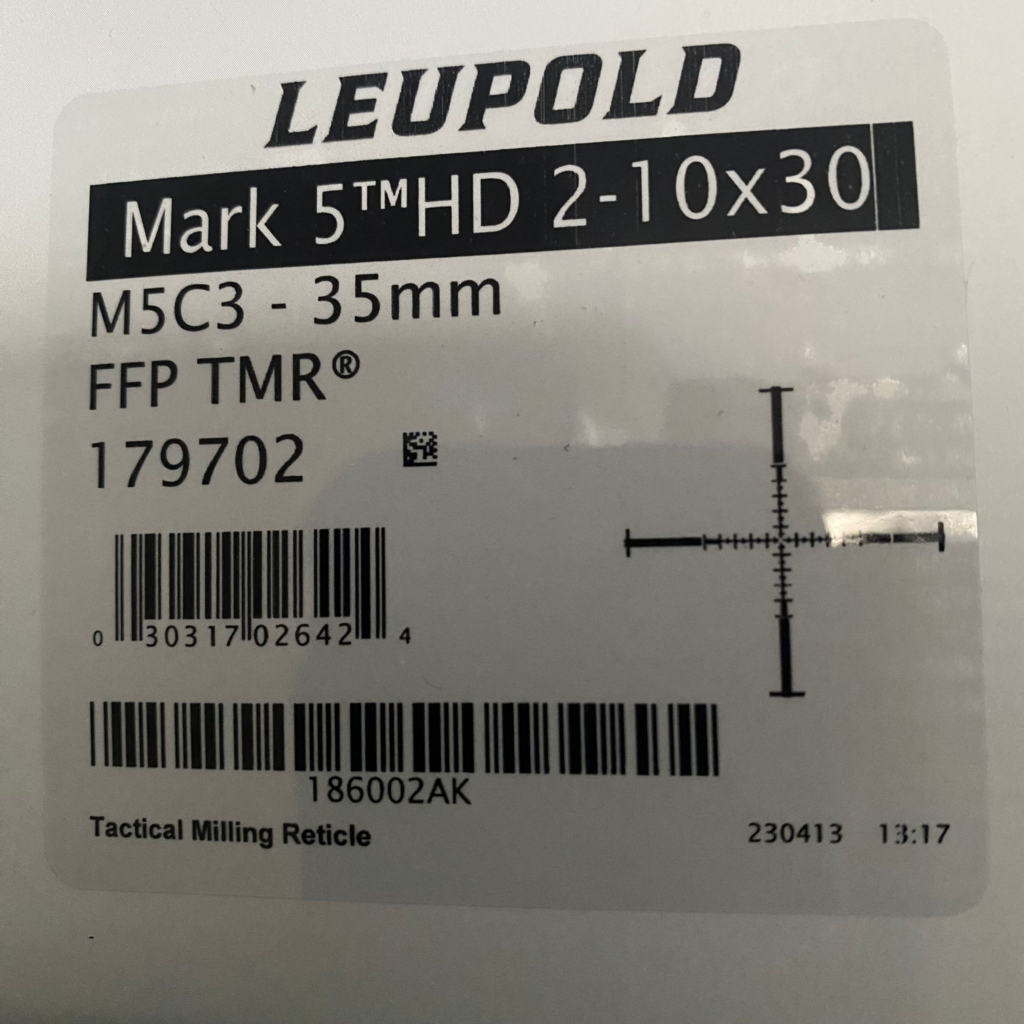
Continued from Part 1
Personal Experience With The Leupold TMR
All of my hands-on experiences with the TMR are based on shooting with a Leupold Mk5 HD 2-10×30 riflescope. I’d argue that this version of the Mk5 HD, which is the most compact in the Mk5 HD family, is likely the spiritual successor to the older Mark 4 LR/T 3.5-10×40 referenced in Part 1 that was issued with the M110 SASS 7.62mm NATO rifle.
Advertisement — Continue Reading Below
To date, I’ve shot with the TMR reticle in two big ways. The first was during the first day of training at the Green Ops LPVO course I took last year. I deliberately used the Mk5 HD/TMR combo to shoot both at CQB distances and across the course at B/C steel-sized targets out to the 400-yard line.
The second big way was during my review of the Smith & Wesson M&P 15-22 rimfire carbine. Sure, mounting a Mk5 HD on an M&P 15-22 is probably overkill, but the fact that the scope was already mounted on a Leupold Mark AR mount made it all too easy to switch over and zero.
At Green Ops LPVO
Shooting Up Close
The Green Ops LPVO course was one of the most memorable training events I took part in last year. Part of my plan for that course was to have an opportunity to shoot the Mk5 HD 2-10×30 from 10 to 500 yards, so to speak. Naturally, the TMR reticle came along for the ride, and I dealt with both its upsides and shortcomings.
Advertisement — Continue Reading Below
Even though my carbine had an offset 45-degree red-dot sight mounted next to the scope, I deliberately shot all the CQB targets using the Mk5 HD with the zoom level adjusted all the way down. I won’t sugarcoat it. In spite of the fact that I got by okay through the CQB portion of the Green Ops course, the TMR reticle itself is simply not ideal for CQB conditions.
In my case, the first focal plane arrangement of the Mk5 HD made it more challenging to use since the reticle looks like a very fine crosshair on 2x and with the “shrinking effect” of first focal plane. Would it work in a pinch? Sure, but it would be awfully difficult in low-light settings, especially without illumination. I was very lucky this event took place on a bright, sunny day and we shot at highly contrasting targets.
Shooting Further

Advertisement — Continue Reading Below
On the flip side, the Leupold TMR kicked ass when taking shots at steel targets at further distances. To respect the spirit of the LPVO-centric curriculum, I never dialed any of my shots. However, the subtensions on the principal vertical stadia line with the 0.5 mil and 1 mil even spacing came in very handy for my holds.
Shooting 5.56 NATO ammo out of that 16-inch barreled carbine meant that my hold for the 55-grain ammo with a zero at 100 yards was dead on for nearly everything inside of 250 yards.
For 300- and 400-yard targets, I just needed to hold over 1 and 2 mils, respectively. Too easy—and with adjustable parallax on the side knob? Maybe I was cheating!
Advertisement — Continue Reading Below
*Sidebar comment: The illuminated version of the TMR reticle found in contemporary Mk5 HD scopes has the entire inner section with the finest stadia lines light up. The entire inner reticle looks like it has a glowing (+) sign.
I think that if there was a way to somehow combine a Leupold Firedot-style aiming point with the TMR reticle, that could make for a very good general-purpose LPVO / 2-10 riflescope reticle. On lower-power magnified optics, a bright aiming point with a basic mil hash marks on the vertical stadia line work quite well.
I say this with the caveat that I’ve not had the chance to look through the illuminated Mk5 HD TMR reticles as they currently exist mounted on a rifle looking downrange, however.
Advertisement — Continue Reading Below
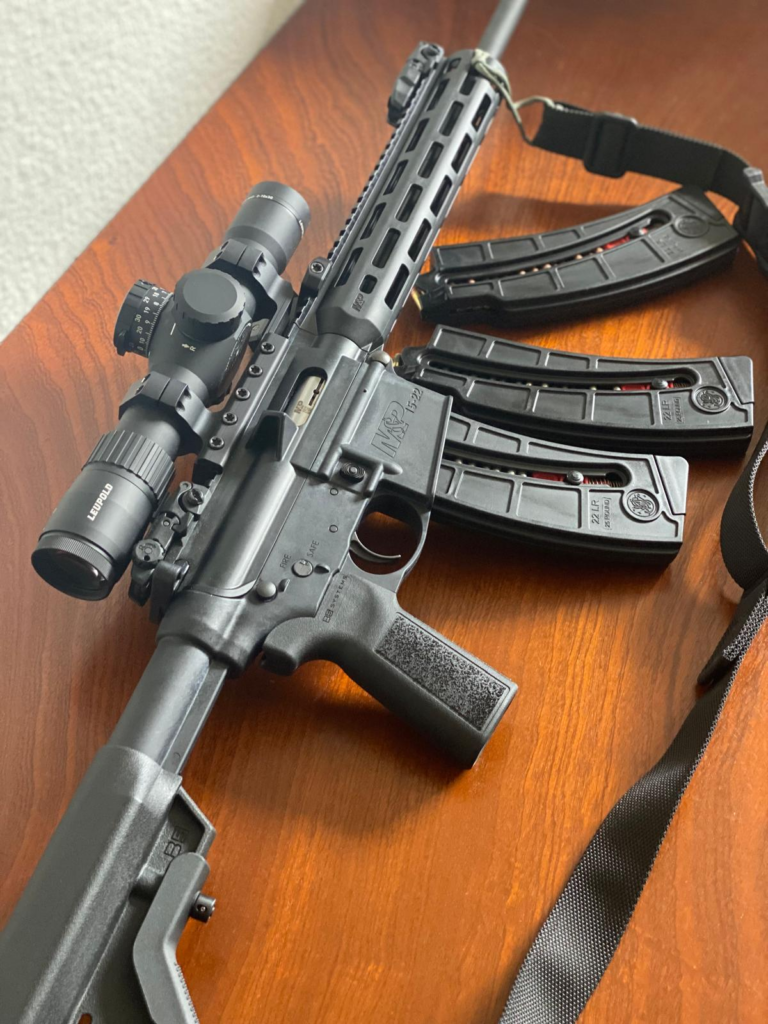
Shooting Groups .22 With The M&P 15-22
While conducting my review of the M&P 15-22 rimfire carbine, my goal was to shoot different groups of rimfire rounds to get a feel for the M&P 15-22’s capabilities. So, review day turned into a long, fun, and quiet afternoon of shooting groups at small aiming points at targets between 25 to 50 yards.
The stock single-stage trigger on these rimfire carbines isn’t anything to write home about, which made me more deliberate with my aim. Over the course of the afternoon, I began noticing some of the TMR’s more nuanced features for the first time.
Advertisement — Continue Reading Below
For example, all stadia lines have 0.20 mil hash marks, whereas the fine stadia lines transition into the coarser ones. Likewise, the coarse stadia lines have hash marks that measure 1 mil in width with a spacing of 5 mils apart. It was while shooting these careful groups that I also cemented my preference for that negative “floating” aiming point.
Leupold originally implemented this negative space to prevent obscuring longer-distance targets for precision shooting applications, and it works great. This void is quite small. In the case of the Mk5 HD I shoot with, it’s only 0.05 mils wide.
The Takeaway
Previously, I’ve called the Leupold TMR a dialing reticle, as it’s straightforward and doesn’t include any wind dots, grids, or additional horizontal stadia lines. In this sense, it could be considered a very minimalistic reticle and may not be everyone’s cup of tea, either. From a precision shooting standpoint, it’s the opposite of a busy precision reticle like the Tremor 3 or Horus H59.
Advertisement — Continue Reading Below
Even so, both the 0.5 mil and 1 mil hash marks along both stadia lines provide decent utility while keeping the central reticle area clutter-free. At Green Ops, I had no difficulties using the bottom stadia line to hold over at distances. As for wind, the hash marks on the horizontal stadia line are still useful for wind calls, too.
Simple Sophistication
Up until the later part of the Cold War, there were hardly any differences between reticles on hunting rifles and military rifles. That started to change with the introduction of mil-dots and footballs in military-oriented scopes. Besides providing reference points for holdovers, these early milliradian-based subtensioning systems also provided snipers and marksmen a rudimentary way to range things to determine their distance.
For the Tactical Milling Reticle, with its cohesive pattern of subtending hash marks along both axes of stadia lines, it’s not just in the name. One look at the reticle diagram, and it’s quite clear how easily one can use this reticle to range distant objects and targets.
Advertisement — Continue Reading Below
With the advent of sophisticated laser rangefinders and binoculars (that also have built-in range finders), the analog milling of targets isn’t probably as commonplace as it used to be. As I said, maybe the milling function of the Leupold TMR is more of a party trick these days. In some ways, it reminds me of the bezels on certain sports watches that still have tachymeters.
But in the case of the TMR, everything is neatly packaged into the reticle without cluttering it. And one never knows when having to manually range something with the reticle comes in handy.
